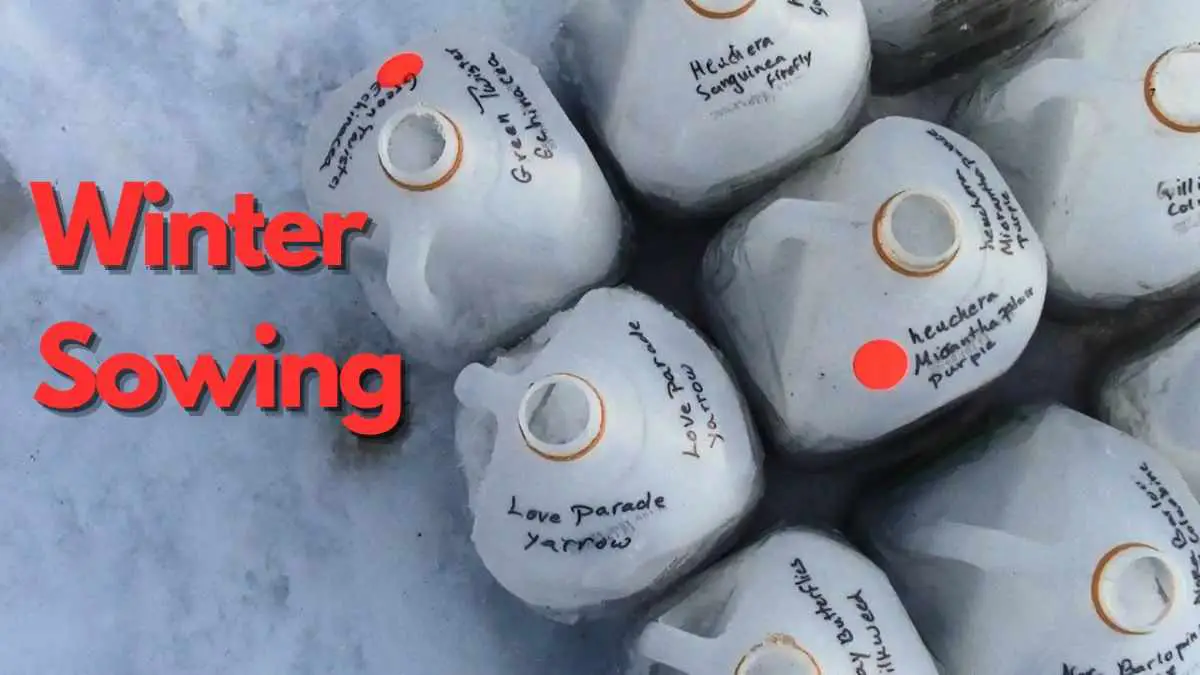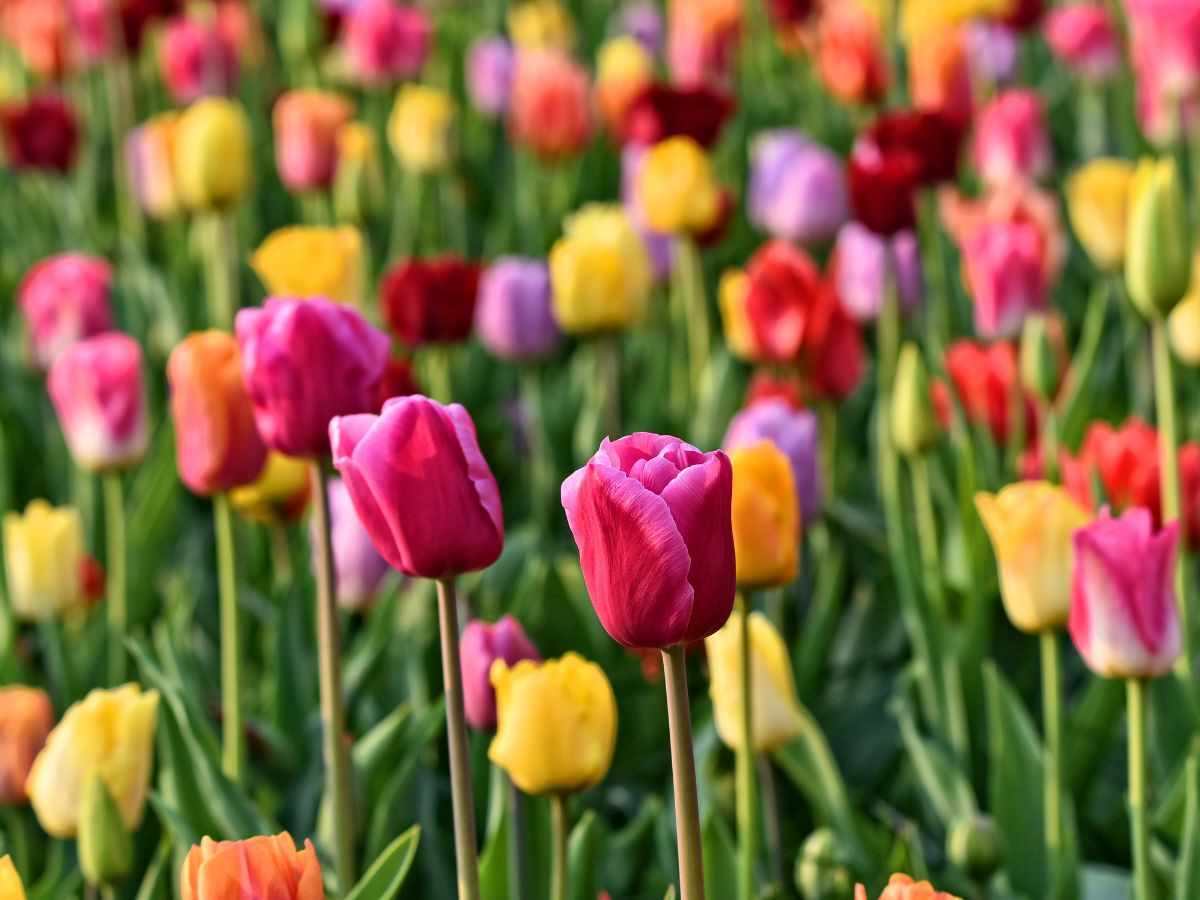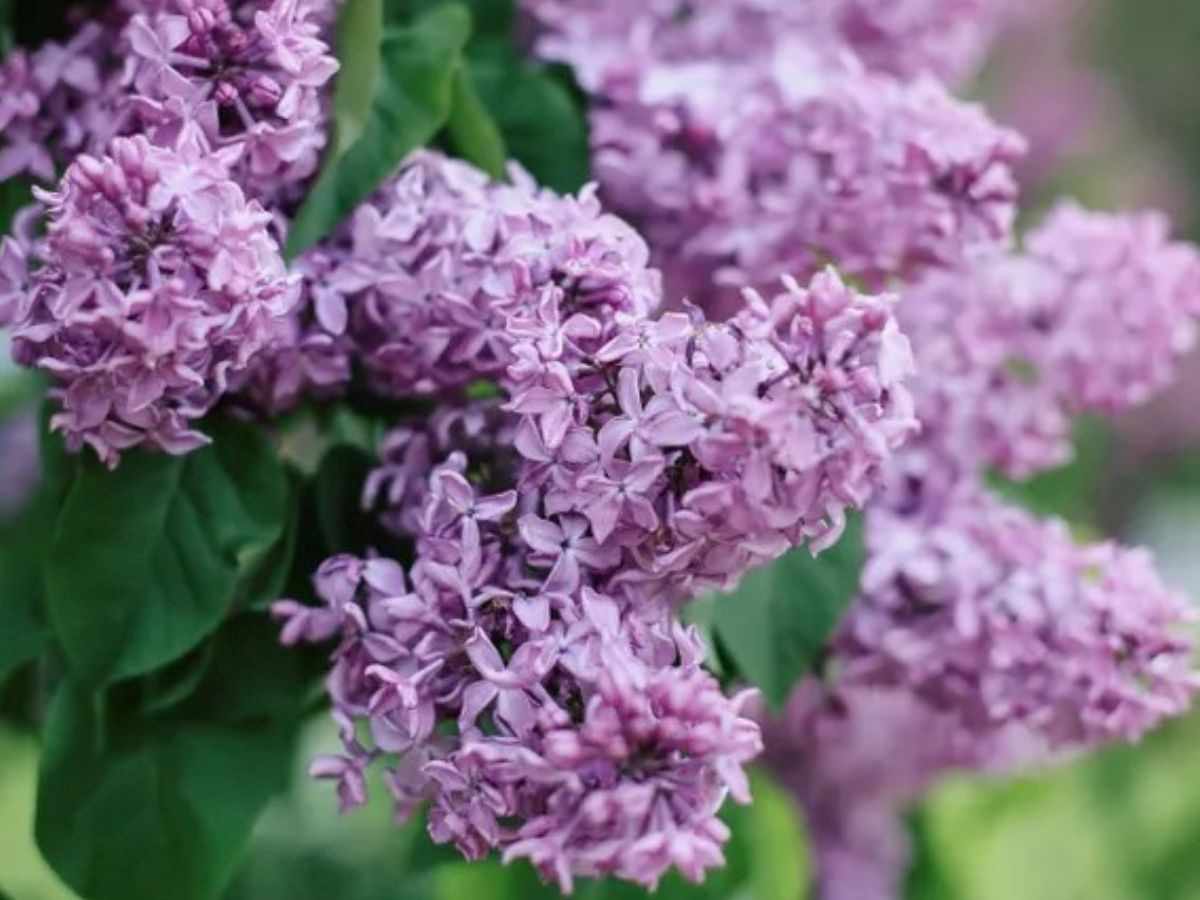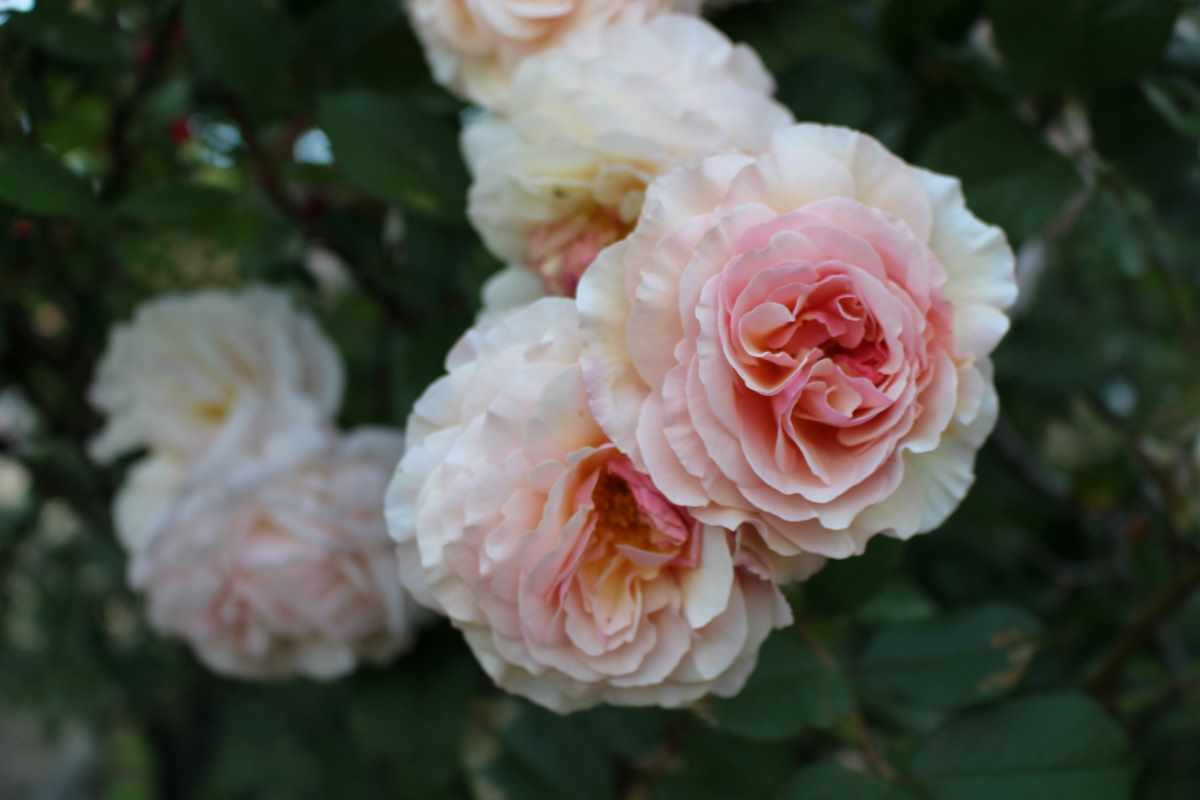Winter sowing is a gardening technique that involves sowing seeds outdoors during the winter months, allowing them to naturally stratify and germinate as temperatures fluctuate in the spring. It’s particularly useful for seeds that require a period of cold to break dormancy, mimicking the natural conditions they would experience in their native habitats.
When Can I Start Winter Sowing
Winter sowing typically begins in the month of January, but can continue on into march. That of course depends on the variety of seeds you chose.
Perennials and some hardy annuals should be winter sown in the beginning of January because they do require a longer period of stratification. However, I have winter sown perennials as late as February and most of them came up.
On the other hand, cool weather plants can be winter sown in either January, or February because they do not necessarily require stratification. Winter sowing is ideal for starting cool weather crops because they will germinate much faster than if direct sown in the ground.
Some gardeners also choose to winter sow warm weather annuals such as tomatoes, cucumbers, and squash. These warm weather annuals should be winter sown between the months of February and march because they do not benefit from stratification.
What Seeds Can Be Winter Sown
Winter sowing can benefit a variety of plants, particularly those that are native to temperate regions or have adapted to cold climates. Basically any plants that benefit from stratification. Here are some examples:
Hardy Annuals
Many annual flowers and vegetables, such as calendula, snapdragons, spinach, and lettuce, can benefit from winter sowing. These plants are adapted to withstand cold temperatures and may even require a period of cold stratification to germinate properly.
Perennials
Perennial flowers and herbs, such as echinacea, lavender, and achillea, can also be successfully winter sown. Cold temperatures can help break dormancy and promote healthier growth in the spring.
Cold-Hardy Vegetables
Vegetables like spinach, kale, cabbage, and broccoli can tolerate cold temperatures and may even benefit from exposure to frost. Winter sowing can give these plants a head start on the growing season.
Native Plants
Many native plants are well-suited to winter sowing because they are adapted to the local climate and growing conditions. Examples include milkweed for monarch butterflies, black-eyed susans, and wildflowers like asters and goldenrod.
Biennials
Some biennial plants, which have a two-year life cycle, can benefit from winter sowing to ensure they have sufficient cold exposure to flower in their second year. Examples include Delphinium and hollyhocks.
When winter sowing, it’s essential to consider the specific requirements of each plant species, such as their cold tolerance, germination needs, and preferred growing conditions.
Watch: Winter Sowing: A Step-By-Step Guide to Seed Starting in Cold Weather
What Is Stratification
Stratification is a process used to simulate the natural conditions that certain seeds require in order to germinate.
Many seeds from temperate climates, especially those from trees and shrubs, need to experience a period of cold, moist conditions before they will sprout. This process is called cold stratification.
During cold stratification, seeds are exposed to cold, moist conditions for a specific period of time. This mimics the conditions they would experience if they were naturally dispersed in the fall and then subjected to winter temperatures before sprouting in the spring.
Cold and moisture help to break down the seed coat and trigger biochemical changes within the seed that signal it’s time to germinate.
Stratification Methods
- Natural Stratification: Some gardeners simulate natural stratification by sowing seeds directly outdoors in the fall, on bare soil, allowing them to experience winter conditions before germinating in the spring.
- Refrigerator Stratification: Seeds can be stratified artificially by placing them in a moist medium, such as damp paper towels or peat moss, and then sealing them in a plastic bag or container. This is then placed in the refrigerator for the recommended stratification period.
- Winter Sowing Stratification: Alternatively, seeds can be stratified outdoors by placing them in clear plastic containers, that will act as mini green houses, and placing them in a sunny location for the winter.
It’s essential to research the specific requirements of the seeds you’re stratifying, as different species have different needs in terms of temperature and duration of stratification.
Additionally, not all seeds require stratification; some will germinate readily without it. However, for those species that do benefit from cold stratification, it can be a crucial step in ensuring successful germination and healthy seedlings.

What Containers Are Good For Winter Sowing
For winter sowing, you’ll want containers that are sturdy, translucent or transparent, and have good drainage. Here are some container options that work well for winter sowing:
Milk Jugs Or Plastic Bottles
Milk jugs or large plastic bottles, like soda bottles, are commonly used for winter sowing. Cut them horizontally near the top and poke holes in the bottom for drainage. The translucent plastic allows light in while protecting seeds from harsh weather.
Clear Plastic Tubs Or Trays
Clear plastic tubs or trays with lids can work well for winter sowing multiple seeds at once. Ensure they have drainage holes in the bottom and are deep enough to accommodate the root systems of the plants you’re sowing.
You can sow the seeds in 3 inch pots and place them in clear plastic tubs for ease of transfer.

Seed Starting Trays With Domes
Seed starting trays with clear plastic domes provide an enclosed environment ideal for germination. They can be placed outdoors for winter sowing, but make sure they have drainage holes to prevent waterlogging.
Recycled Containers
Many household containers can be repurposed for winter sowing, such as deli containers, or takeaway containers. Just make sure to create drainage holes in the bottom and provide some form of covering to protect the seeds.
When choosing containers for winter sowing, prioritize ones that are durable enough to withstand outdoor conditions and large enough to accommodate the root systems of the plants as they grow.
Additionally, ensure that the containers are clean and sterilized to prevent the spread of diseases or pests to your seedlings.
Watch: Winter Sowing Update 2023 // Which Method is The Best
What Type Of Soil Is Good For Winter Sowing
The ideal soil for winter sowing is a well draining soil that is rich in organic matter. A good Potting mix should do the trick.
During winter sowing, your seedlings should put on a good amount of growth. The presence of rich organic matter is essential to providing them with nutrient and helping them grow.
Do not use seed starting mixes because they do not contain enough nutrients to nourish your seedlings. Seed starting mixes dry out much faster than potting mixes and may cause your seeds to dry out during the germination period.
If the seeds dry out while they are germinating, they will die. To prevent this, it is essential to keep your seeds, and seedlings moist.
Winter Sowing Steps
Preparing Your Containers
If you are using milk jugs, cut the containers horizontally, leaving a hinge intact on one side. Make several drainage holes in the bottom for water to escape. Fill the bottom with soil, leaving enough space for seed sowing.
Sowing Your Seeds
Sow the seeds according to the recommended depth on the seed packet. You can sow multiple seeds in one container, and make sure to label them.
Watering
Water the soil lightly to ensure it’s moist but not waterlogged.
Labeling And Ventilation
Label each container with the type of seeds sown and the date. Close the lid but leave it slightly ajar or poke holes in it to allow for air circulation. This prevents excessive moisture buildup inside the container.
If you are using milk jars, dispose of the cap. The hole at the top of your containers will allow rain, snow, and air circulation to water and strengthen your seedlings.
If your containers are light or have a light lid, place a rock or heavy object on top of them to prevent them from flying in the wind. (This happened to me once, and I had to resow all my seeds.)
Placement
Place the containers outdoors in a location where they’ll receive sunlight once the days start getting longer. South-facing areas are usually ideal. The containers act as mini-greenhouses, trapping heat during the day and protecting seedlings from extreme cold at night.
Monitoring
Keep an eye on the containers throughout the winter, ensuring they don’t dry out completely or become waterlogged. As temperatures warm up in spring, the seeds will gradually germinate and grow.
Transplanting
Once seedlings have grown large enough and the danger of frost has passed, Open the containers to prevent the plants from getting cooked by the sun’s heat. Once ready, transplant them into their permanent location in your garden.
Watch: Winter Sowing Perennials
Pin This Post!

More Gardening and Recipe Related Topics
Gardening
Recipes
Beef Carnitas That Will Knock Your Socks Off
Rustic Swiss Chard Tart – Gluten Free
Shop This Post
Seed starting trays with clear plastic domes
Tell Us What You Think!
Winter sowing is a low-maintenance method that takes advantage of natural conditions to grow strong, healthy seedlings. It’s particularly popular among gardeners in colder climates or those with limited indoor space for starting seeds.
Is this your first time winter sowing? Let us know if you have any comments or questions down in the comment section below.





Be the first to reply